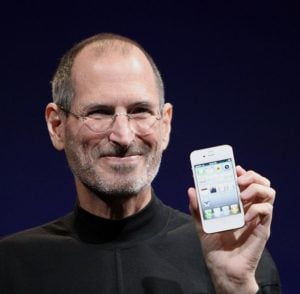Apple Computer, Inc. is the world’s largest corporation, with a market capitalization of $566 billion as of October 2012. This is greater than that of Microsoft and Google combined. Apple’s ability to delight millions of consumers with well-crafted, fun to use, life-enhancing devices accounts, in large part, for why the company has done so well.
But Apple doesn’t merely create superlatively innovative devices; it also allows just about anyone with an Apple Macintosh computer to design, write, and sell all sorts of applications that dramatically extend the functionality of those devices.
In the summer of 2008, Apple introduced its iTunes App Store online, where owners of iPhones and iPod Touches could view, purchase, and download small applications (“apps”) by means of the devices themselves. The “App Store” is now a household phrase, and 700,000 apps are available for the 400 million Apple devices purchased so far. Apple didn’t invent the software market, but with its new, highly profitable way to sell software, it built a better one.
Ever since Apple introduced this new marvel, the company’s competitors—Microsoft, Google, and Amazon—have been scrambling to keep up. This high-stakes scramble provides a glimpse into the remarkable, life-serving power of capitalism.
Apple’s App Store innovation not only rained wealth on the company and values on its customers; it also encouraged Apple’s competitors to exploit a plethora of new opportunities made possible by the innovation, and thus increase their own innovation, their own product offerings, their own profits.
Likewise for smartphones. Although Apple did not invent these, either, the company’s iPhone and its sister, the iPod Touch, were breakthrough handheld devices. People on the go could now carry what were essentially miniature computers capable of performing an unprecedented number of tasks, and these devices were sold at prices that millions of people could afford. These devices also expanded the possibilities for apps for mobile devices—possibilities that Apple proceeded to turn into actualities.
Initially Apple permitted only its own apps on the two devices. But the company soon realized that the potential for products and revenue would expand exponentially if it permitted independent developers to create software for them as well. Apple’s experience with the desktop computer—both positive (Apple II) and negative (Macintosh)—had demonstrated that the more apps there were for its hardware, the more hardware Apple would sell. But how could Apple ensure that the apps were of sufficiently high quality and value?
To understand how Apple answered this question, it’s helpful to recall how software applications were delivered over the preceding three decades—namely, by means of the proprietary, distributorship, and shareware/freeware approaches. . . .
You might also like
[groups_can capability="access_html"]
Endnotes
1 Richard Rorty, Achieving our Country: Leftist Thought in Twentieth-Century America (Cambridge: Harvard University Press, 1998), p. 29. Rorty is here interpreting John Dewey and doing so favorably.
2 “From Logic to Language to Play,” Proceedings and Addresses of the American Philosophical Association 59 (1986): pp. 747–53.
3 Rorty, Achieving our Country, p. 27. Rorty is here interpreting Walt Whitman and doing so favorably.
4 Richard Rorty, “The Next Left,” interview by Scott Stossel, Atlantic Unbound, April 23, 1998.
5 Richard Rorty, Consequences of Pragmatism (Minneapolis: University of Minnesota Press, 1982), p. xlii.
6 Rand’s induction of this principle involves several steps; for details see Ayn Rand, “The Objectivist Ethics,” in The Virtue of Selfishness (New York: Signet, 1962); or Craig Biddle, Loving Life: The Morality of Self-Interest and the Facts that Support It (Richmond: Glen Allen Press, 2002).
7 Robert C. Mortimer, Christian Ethics (London: Hutchinson’s University Library, 1950), p. 8.
8 “St. Gregory’s Pastoral Rule [chapter XXI]” in A Select Library of Nicene and Post-Nicene Fathers of the Christian Church; Socrates, Sozomenus Church Histories (1890), edited by Philip Schaff and Henry Wace.
9 Rand, “The Objectivist Ethics,” p. 13.
10 Ayn Rand, For the New Intellectual, (New York: Signet, 1963), p. 123.
11 Rand, “The Objectivist Ethics,” pp. 27–28.
12 Cf. Leonard Peikoff, Objectivism: The Philosophy of Ayn Rand (New York: Meridian, 1993), p. 276.
13 Rand, “The Objectivist Ethics,” p. 28.
14 For a detailed overview of the Objectivist virtues, see Rand, “The Objectivist Ethics”; or Biddle, Loving Life, chapter 6, “Objective Moral Virtues: Principled Actions.”
15 To learn more about America’s Comeback Philosophy, read Rand’s novel Atlas Shrugged and her nonfiction books The Virtue of Selfishness, Philosophy: Who Needs It, and Capitalism: The Unknown Ideal.
[/groups_can]














